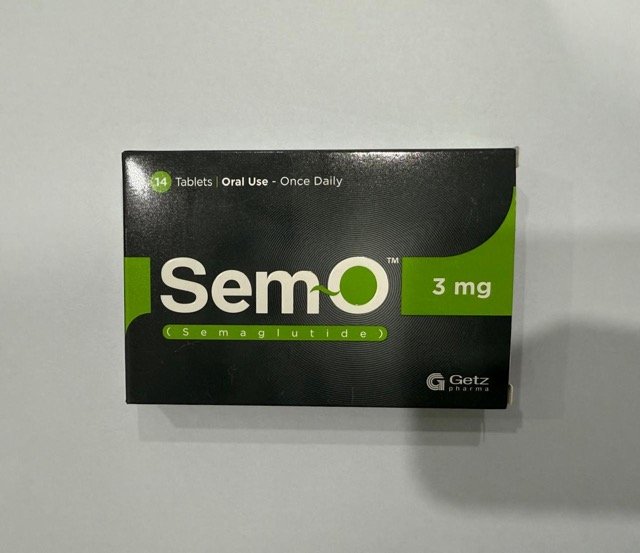Flunisolide is used for oral inhalation and for intranasal use. It is considered a week topical corticosteroid with a potency equivalent to triamcinolone. It is less potent than beclomethasone. It is used in the maintenance treatment of asthma and other allergic airway diseases.
Flunisolide Uses:
-
Asthma:
- Asthma maintenance therapy used as preventative medicine in individuals less than 6 years.
- Limitations:
- It is not recommended to use flunisolide to treat acute bronchospasm.
- Guideline recommendations:
- The initial preferred long-term control drug for children, adolescents, and adult patients with persistent asthma who are eligible for treatment using a step-wise treatment approach is a low-dose inhaled corticosteroid (in addition to an as-needed short-acting beta-agonist).
Flunisolide Dose in Adults
Note: In the US, Aerospan hasn't been sold for more than a year.
Note:
- Based on past asthma treatments and the severity of the condition, the suggested starting dose may be increased in patients who do not respond to treatment after two weeks.
- Once asthma is under control, titrate to the lowest dose that is effective.
Flunisolide Dose in the treatment of Asthma:
- Oral inhalation: Metered-dose inhaler:
Note:
- Patients with mild to moderate asthma who experience a small flare in symptoms may choose to temporarily quadruple the dose (early in the course of the disease) to lessen the severity or length of an asthma exacerbation.
This method should only be used in patients with adequate self-management abilities, no prior history of life-threatening asthma exacerbations, and who can return to their baseline dose after their symptoms have normalised, up to 14 days after starting the quadrupled dose. -
Patients not currently on inhaled corticosteroids:
- Initial: twice day, 160 mcg
- A maximum of 320 mcg twice daily is allowed.
-
Asthma Guidelines:
-
Metered-dose inhaler:
- Low-dose treatment: 320 mcg daily, divided into two doses
- Therapy at a medium dose is >320 to 640 mcg per day in two divided doses.
- Therapy at a high dose: >640 mcg/day in two divided doses
-
Flunisolide Dose in Children
Note: Aerospan has been discontinued in the US for more than 1 year.
Flunisolide Dose in the treatment of Asthma:
- Oral inhalation (80 mcg/inhalation):
- Increase dosage if necessary after 3 to 4 weeks of initial dosage; once asthma is under control, doses should be titrated to the lowest effective dose.
-
Manufacturer's recommendations:
- Children 6 to 11 years:
- Initial: Twice daily, one 80 mcg inhalation
- The highest recommended dosage is two inhalations (160 mcg), twice day (320 mcg).
- Children ≥12 years and Adolescents:
- Initial: Twice daily, two 160 mcg inhalations
- The highest recommended dosage is four inhalations (320 mcg) administered twice day.
- Children 6 to 11 years:
-
Asthma Guidelines: National Asthma Education and Prevention Program (NAEPP 2007) (administer in divided doses twice daily):
-
Children 5 to 11 years:
- "Low" dose: 160 mcg daily
- "Medium" dose: 320 mcg daily
- "High" dose: ≥640 mcg daily
-
Children ≥12 years and Adolescents:
- "Low" dose: 320 mcg daily
- "Medium" dose: >320 to 640 mcg daily
- "High" dose: >640 mcg daily
-
Conversion:
- Switch from orally administered systemic corticosteroid to orally administered corticosteroid:
- Patients whose asthma is reasonably stable on oral corticosteroids should start oral inhalation treatment (OCS).
- OCS dose reduction should commence seven days or less after starting inhalation therapy.
In children under the age of six and teenagers, US labelling advises reducing prednisone dose no more quickly than by 2.5 mg/day (or the equivalent of another OCS) every one to two weeks. - Temporarily raise the OCS dose and then begin a more progressive withdrawal if adrenal insufficiency develops.
- It should be noted that while switching from systemic to inhaled corticosteroids, further systemic corticosteroid medication can be required during stressful times or when someone is having a severe asthma attack.
- Switch from orally administered systemic corticosteroid to orally administered corticosteroid:
-
Pregnancy Risk Category: N
- Uncontrolled asthma can lead to adverse pregnancy events (increased chance of perinatal death, pre-eclampsia and low birth weight).
- Exacerbations of asthma or poorly controlled asthma may be more dangerous to the foetus and maternal health than correctly administered treatments.
- For the treatment of asthma in pregnancy, it is recommended to take inhaled corticosteroids.
- Flunisolide can be continued by pregnant women who are well controlled with asthma medication.
- An agent with greater data may be suggested if treatment begins during pregnancy.
Flunisolide use during breastfeeding:
- It is unknown if enough flunisolide is absorbed after inhalation to make breast milk detectable.
- Flunisolide should not be administered to breastfeeding women because of the presence of other corticosteroids in breast milk.
- The use of inhaled corticosteroids does not contraindicate breastfeeding.
- Breastfeeding should be encouraged for women with asthma.
Dose in Kidney Disease:
Mo dosage adjustments
Dose in Liver disease:
There are no dosage adjustments provided in the manufacturer's labeling (has not been studied).
Common Side Effects of Flunisolide:
-
Central nervous system:
- Headache
-
Respiratory:
- Pharyngitis
- Rhinitis
Less Common Side Effects of Flunisolide:
-
Cardiovascular:
- Chest Pain
- Edema
- Capillary Fragility
- Chest Tightness
- Hypertension
- Palpitations
- Peripheral Edema
- Tachycardia
-
Central Nervous System:
- Pain
- Dizziness
- Insomnia
- Migraine
- Voice Disorder
- Anosmia
- Anxiety
- Depression
- Fatigue
- Hyperactivity
- Hypoactivity
- Irritability
- Malaise
- Mood Changes
- Numbness
- Shakiness
- Vertigo
-
Dermatologic:
- Skin Rash
- Erythema Multiforme
- Acne Vulgaris
- Diaphoresis
- Eczema
- Pruritus
- Urticaria
-
Endocrine & Metabolic:
- Weight Gain
- Adrenal Suppression
- Adrenocortical Insufficiency
- Growth Suppression
- Hyper Corticoidism
-
Gastrointestinal:
- Vomiting
- Dyspepsia
- Abdominal Pain
- Diarrhea
- Dysgeusia
- Gastroenteritis
- Nausea
- Oral Candidiasis
- Ageusia
- Constipation
- Decreased Appetite
- Epigastric Fullness
- Flatulence
- Glossitis
- Heartburn
- Mouth Irritation
- Sore Throat
- Stomach Discomfort
- Oropharyngeal Candidiasis
-
Genitourinary:
- Urinary Tract Infection
- Dysmenorrhea
- Vaginitis
-
Hematologic & Oncologic:
- Lymphadenopathy
-
Hypersensitivity:
- Hypersensitivity Reaction
-
Infection:
- Bacterial Infection
- Infection
- Cold Symptoms
- Influenza
-
Neuromuscular & Skeletal:
- Back Pain
- Myalgia
- Neck Pain
- Weakness
- Decreased Bone Mineral Density
-
Ophthalmic:
- Conjunctivitis
- Blurred Vision
- Eye Discomfort
- Eye Infection
- Cataract
- Glaucoma
- Increased Intraocular Pressure
-
Otic:
- Otalgia
- Otitis
-
Respiratory:
- Cough
- Sinusitis
- Epistaxis
- Bronchitis
- Laryngitis
- Bronchospasm
- Chest Congestion
- Dry Throat
- Dyspnea
- Hoarseness
- Increased Bronchial Secretions
- Nasal Congestion
- Nasal Mucosa Irritation
- Pleurisy
- Pneumonia
- Rhinorrhea
- Sinus Congestion
- Sinus Discomfort
- Sinus Drainage
- Sinus Infection
- Sneezing
- Throat Irritation
- Upper Respiratory Tract Infection
- Wheezing
- Exacerbation Of Asthma
-
Miscellaneous:
- Fever
Contraindications to Flunisolide:
The primary management of status asthmaticus and other acute asthma episodes necessitates intensive care.
Warnings and precautions
-
Suppression of the adrenals:
- May cause hypercortisolism or suppression of the hypothalamic-pituitary-adrenal (HPA) axis, particularly in younger children or in patients receiving high doses for prolonged periods.
- An adrenal crisis may result from HPA axis suppression.
- It is important to withdraw and stop using a corticosteroid slowly and carefully.
- Patients who are being transferred from systemic to inhaled corticosteroids must be careful.
- This is because of possible adrenal insufficiency, withdrawal from steroids, and can cause an increase in allergy symptoms.
- Prednisone may make adult patients more susceptible if they are taking >=20mg of prednisone daily (or an equivalent).
- After switching from systemic corticosteroids (or aerosol steroids) to systemic corticosteroids, asthmatic individuals have passed away from adrenal insufficiency. The systemic steroids required to treat trauma, surgery, infections, gastroenteritis, and other severe electrolyte losses are not available as aerosol steroids.
- During surgery, intravenous stress doses of hydrocortisone should be administered to ICS patients who are taking a long-term high-dose inhaled corticosteroid regimen (ICS).
- The dose should be reduced quickly within 24 hours.
-
Bronchospasm
- Inhaled bronchodilating agent use can cause paradoxical bronchospasm, which could be potentially life-threatening.
- The inadequate response should be distinguished from the inappropriate reaction.
- Flunisolide should be stopped if paradoxical bronchospasm is experienced.
-
Immunosuppression:
- Additionally, corticosteroids can be used for extended periods of time to reduce the effectiveness of vaccines, raise the risk of secondary infections, conceal acute illnesses (including fungal infections), prolong and worsen viral infections, and disguise fungal infections.
- Avoid patients who have untreated viral, fungus, or parasite infections, active or quiescent respiratory tuberculosis, ocular herpes, or active or quiescent respiratory tuberculosis.
- Avoid exposure to the measles and chickenpox. Prophylaxis may be advised if the patient has received either pooled intranamuscular immunoglobulin or varicella-zoster immunoglobulin.
- If chickenpox appears, treatment with antiviral medications might also be taken into account.
-
Oral candidiasis:
- Oropharynx infections caused locally by Candida albicans have been documented. If this occurs, keep up your therapy.
- Patients should be instructed to rinse their mouths with water and not swallow after each use.
-
Asthma
- During severe asthma attacks or stress, you may need to take oral or parenteral steroids.
- For acute symptoms or symptoms that occur between treatments, short-acting beta-agonists (eg albuterol) should not be used.
- It is not recommended to use in the treatment of asthmaticus, or acute bronchospasm.
-
Bone mineral density:
- Patients who have major risk factors, such as extended immobility, family history, osteoporosis, a postmenopausal condition, smoking, poor nutrition, or long-term use of oral corticosteroids and anticonvulsants (e.g., anticonvulsants), should be closely monitored.
- Long-term inhaled corticosteroids use has been linked to a decrease in bone mineral density.
-
Ocular disease:
- Patients with cataracts or glaucoma should be cautious; patients who have experienced increased intraocular pressure, cataracts, and glaucoma with long-term use of the device should be aware.
- Routine eye exams are recommended for chronic users.
Flunisolide (oral inhalation): Drug Interaction
|
Risk Factor C (Monitor therapy) |
|
|
Amphotericin B |
Amphotericin B's hypokalemic impact may be increased by corticosteroids (oral inhalation). |
|
Corticorelin |
The therapeutic benefit of corticorelin may be reduced by corticosteroids. In particular, recent or ongoing corticosteroid medication may reduce the plasma ACTH response to corticorelin. |
|
Cosyntropin |
The diagnostic value of Cosyntropin may be diminished by corticosteroids (Orally Inhaled). |
|
CYP3A4 Inhibitors (Strong) |
May raise the level of corticosteroids in the blood (Orally Inhaled). Treatment: It is not advised to use an effective CYP3A4 inhibitor with orally administered fluticasone propionate. |
|
Deferasirox |
Corticosteroids may intensify Deferasirox's negative/toxic effects. Particularly, there may be a higher risk of GI bleeding or ulcers. |
|
Loop Diuretics |
The hypokalemic impact of loop diuretics may be enhanced by oral inhaled corticosteroids. |
|
Ritodrine |
Corticosteroids may intensify Ritodrine's harmful or hazardous effects. |
|
Thiazide and Thiazide-Like Diuretics |
Thiazide and Thiazide-Like Diuretics may have a stronger hypokalemic effect when corticosteroids (orally inhaled) are used. |
|
Tobacco (Smoked) |
Corticosteroids' ability to treat disease may be compromised (Orally Inhaled). |
|
Risk Factor D (Consider therapy modification) |
|
|
Hyaluronidase |
The therapeutic benefit of hyaluronidase may be reduced by corticosteroids. Treatment: Standard doses of hyaluronidase may not produce the desired clinical response in patients using corticosteroids (especially at higher doses). Hyaluronidase may be needed at higher doses. |
|
Risk Factor X (Avoid combination) |
|
|
Aldesleukin |
The anti-cancer effects of corticosteroids may be diminished by aldesleukin. |
|
Desmopressin |
Desmopressin's hyponatremic action may be enhanced by corticosteroids (oral inhalation). |
|
Loxapine |
Agents to Treat Airway Disease may enhance the adverse/toxic effect of Loxapine. More specifically, the use of Agents to Treat Airway Disease is likely a marker of patients who are likely at a greater risk for experiencing significant bronchospasm from use of inhaled loxapine. Management: This is specific to the Adasuve brand of loxapine, which is an inhaled formulation. This does not apply to non-inhaled formulations of loxapine. |
Monitoring parameters:
- Growth
- HPA axis suppression/adrenal insufficiency
- oral candidiasis
- possible eosinophilic conditions
- FEV-1
- Peak flow
- asthma symptoms
- bone mineral density
- glaucoma/cataracts
How to administer Flunisolide?
Metered-dose inhaler:
- Shake vigorously before use.
- Release 2 test sprays away from the face to prime the inhaler before the first use and whenever it hasn't been used for more than two weeks.
- After each usage, rinse your mouth with water without swallowing.
- Never submerge the canister to check its remaining capacity (also known as a "float test").
- There is an internal spacer incorporated into the inhaler; you do not need to use an external spacer or holding chamber device, and cleaning is not necessary.
- Even if the canister is still full, throw away the inhaler once it has been used for 60 or 120 sprays.
Mechanism of action of Flunisolide:
- It reduces inflammation of the airways by suppressing endogenous mediators like histamine, liposomal enzymes and prostaglandins.
- Additionally, it inhibits inflammatory cell motility and permeability to limit access to the site of inflammation. It doesn't cause hypothalamus depression.
Absorption:
- Rapid
Metabolism:
- CYP3A4 catalyses rapid and broad hepatic metabolism to the marginally active metabolite (6 beta-OH flunisolide); conjugation also occurs.
Bioavailability:
- Oral: <7%;
- Oral inhalation: ~34%
Half-life elimination:
- 1.3-1.7 hours
Time to peak:
- Within 5-10 minutes
Excretion:
- Rapid; not detectable in plasma 12-hours post-dose;
- urine (<1% as unchanged drug)
International Brand Names of Flunisolide:
- Aerospan
- Pulmilide
Flunisolide Brand Names in Pakistan:
No Brands Available in Pakistan.



.jpeg)



